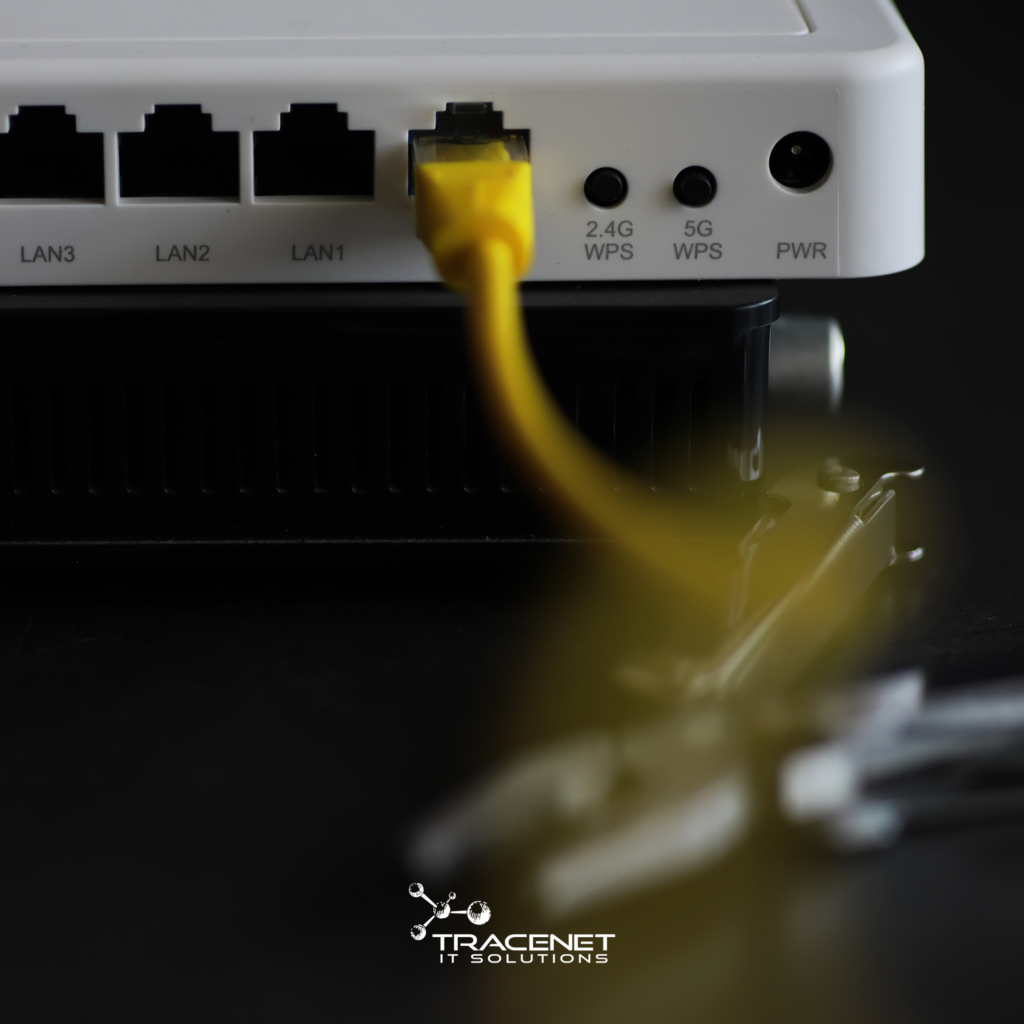The network switch is a device found in many environments, both residential and corporate. It is a piece of equipment that connects servers, storage units and computers. At the same time, they are responsible for organizing and delivering data, directing it to its respective destination.
There are several types of network or Ethernet switches and we’ll talk about each of them in today’s content!
How does a network switch work?
Operating at Layer 2 of the OSI (Open Systems Interconnection) model, switches work by recognizing the MAC (Media Access Control) addresses of the devices connected to it and, based on these addresses, filter the data and make routing decisions. What do you mean? Let’s take a closer look:
When reading the source and destination addresses of the Ethernet frame, the switch stores the source MAC address in its address table, associating it with the port through which the frame was received. This table is continually updated as the switch learns new addresses and their corresponding ports.
Once a frame arrives at the switch, it checks the destination MAC address. If the destination address is in the MAC address table, the switch forwards the frame directly to the port associated with that address. If the destination MAC address is not in the table, the switch forwards the frame to all ports except the source port.
This process continues until the switch learns the destination MAC address and can forward subsequent frames directly to the correct port. Data filtering is an essential function of the switch, preventing frames from being sent to all ports indiscriminately.
Not only does this reduce unnecessary network traffic, but it also increases security by ensuring that data is only sent to the correct destination device.
Why is a switch important?
The switch is important for a number of reasons that are essential for the efficient and secure operation of local area networks (LANs). Here are the main reasons why they are so important:
Collision Reduction
In a network without switches, as in a hub-based network, all devices share the same collision domain, increasing the likelihood of data collisions. Switches divide the network into several collision domains, isolating each device’s traffic and thus minimizing collisions and improving network performance.
Support for Full-Duplex Communication
Modern switches support full-duplex communication, allowing devices to send and receive data simultaneously. This doubles the communication capacity between devices, improving network speed and efficiency.
Network segmentation with VLANs
Switches allow the creation of VLANs (Virtual Local Area Networks), which segment a physical network into several logical networks. VLANs increase security by isolating different network segments and improve efficiency by allowing network traffic to be managed more effectively.
Traffic prioritization with QoS
The Quality of Service (QoS) functionality in switches makes it possible to prioritize specific types of traffic, such as voice and video, over other types of data traffic. This is essential for guaranteeing the quality of critical services that require low latency and high reliability, such as VoIP calls and video streaming.
Scalability
Switches make it easy to expand the network, allowing more devices to be added without compromising performance. They offer many ports for connecting additional devices and can be cascaded or stacked to further increase network capacity.
Improved Quality of Service
The ability to manage network traffic efficiently and prioritize critical services helps ensure a better experience for end users. This is particularly important in corporate environments where network reliability and speed are essential for day-to-day operations.
What are the different types of network switches?
Network switches come in different types, each designed to meet the specific needs of networks of varying sizes and complexity. Here are the main types of network switches:
- Unmanageable Switches: these are simple, plug-and-play devices that offer no configuration or management options. They are ideal for small home networks or small offices where simplicity and cost are the main concerns.
- Manageable Switches: offer advanced configuration and control options, allowing network administrators to optimize network performance and security. They can be configured to support VLANs, QoS, port mirroring, and other advanced features. There are two main subtypes of manageable switches:
- Layer 2 Managed Switches: these operate at Layer 2 of the OSI model and offer control over MAC addresses, VLANs and some security functions.
- Layer 3 Managed Switches: In addition to Layer 2 functions, these switches operate at Layer 3, allowing packet routing between different subnets. They are suitable for larger, more complex networks that require internal routing.
- Stackable Switches: allow multiple switches to be connected in a single logical unit, providing greater flexibility and scalability. This facilitates network expansion, as new switches can be added to the stack without reconfiguring the entire network.
- Modular Switches: provide slots that can be filled with different types of modules (Ethernet ports, fiber ports, etc.), allowing for extensive customization and scalability. They are often used in large data centers and corporate networks where flexibility and upgradeability are crucial.
- PoE (Power over Ethernet) switches: supply electrical power to compatible devices, such as VoIP phones, IP cameras and wireless access points, via the same Ethernet cables that carry data. This eliminates the need for separate power supplies for these devices, simplifying installation and management.
- Industrial Switches: can withstand harsh conditions such as extreme temperatures, humidity, dust and vibration. They are used in industries such as manufacturing, transportation and energy.
- KVM (Keyboard, Video, Mouse) switches: allow multiple computers to be controlled by a single set of keyboard, monitor and mouse. They are useful in IT environments where several servers or computers need to be managed centrally.
- Data Center Switches: offer high port density, low latency and support for large volumes of traffic. They generally support advanced technologies such as layer 3 switching, multipathing and network virtualization.
- Virtual Switches: operate in virtualization environments such as VMware or Hyper-V, connecting virtual machines to each other and to the physical network. They allow the configuration and management of virtual networks within physical servers.
Each type of switch meets specific needs, from simple connectivity in small networks to advanced control and scalability in large corporate networks and data centers. Choosing the right switch depends on the specific performance, management, security, and scalability requirements of the network in question.



